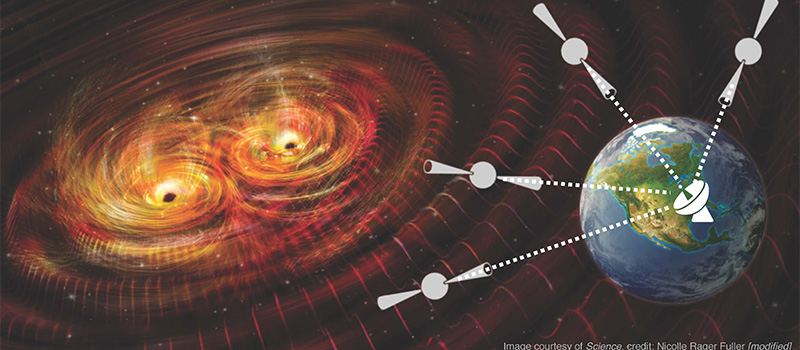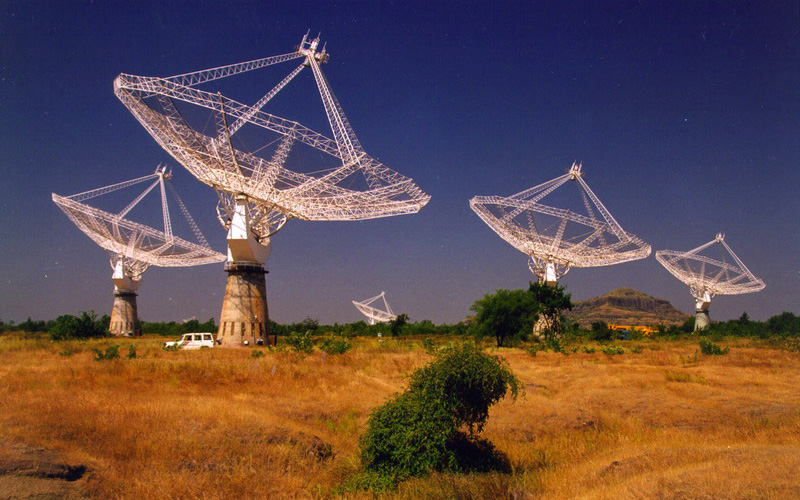Challenging the mystery of the birth of supermassive black hole


Dr. Keitaro TAKAHASHI
Professor, Division of Natural Science, Faculty of Advanced Science and Technology
The universe is full of unsolved mysteries. One of them is how supermassive black hole is created, which is being studied by Prof. Keitaro Takahashi, Faculty of Advanced Science and Technology. His exciting talk will make you think about the magnificent universe.
Capturing signal of “gravitational waves” from black hole.
Please tell us about your research.
Dr. Takahashi: I work in the field of physics, which is called astrophysics or astronomy. It uses physics to solve the mysteries of the universe. We study the universe by observation, theoretical calculations, computer simulations, and so on. One of the areas our laboratory observes is black holes.
When a massive star runs of fusion fuel in its core, it collapses and forms a black hole due to its own gravity. The Sun is also a star, but a star the size of our sun does not become a black hole. Stars with initial masses much greater than our sun have the potential to form black holes.
There are many black holes in the universe that are ten to several dozen times the size of our sun. But there is one supermassive black hole at the center of our galaxy. Its mass is 1 million to 1 billion times that of the sun. We still don’t know how this supermassive black hole forms and grows, and one of our research goals is to figure that out.
What methods do you use in your research?
Dr. Takahashi: There is a leading hypothesis for the formation of a supermassive black hole. It is believed that many black holes in the universe, which are not so large, merge one after another and form a supermassive black hole over a period of more than 10 billion years. It is thought that these black holes do not crash into each other, but rather gradually shorten their distance from each other as they circle around each other, and eventually merge. When heavy celestial objects such as black holes are in close orbits, they send out gravitational waves. By capturing and verifying these gravitational waves on Earth, we can determine whether this merger theory is correct or not.
However, gravitational waves are “space distortion” and cannot be captured directly. So, I am observing a type of celestial object called a pulsar. There are many pulsars in the universe, and they periodically shine and emit radio waves. They are like lighthouses. The radio wave period from pulsars shifts slightly when space is distorted by the passage of gravitational waves. For example, a radio wave that should originally arrive every second becomes 0.9 seconds. By analyzing this, gravitational waves are detected.

A technique called “pulsar timing array”, which capture gravitational waves emitted from super massive black hole binary by observing pulsars
It is challenging because it is difficult and takes a long time.
This is the first time I have heard of gravitational waves.
Dr. Takahashi: Gravitational waves can only be emitted from very massive objects with extreme conditions, such as black holes. If there are two or more black hole binaries spinning in a circle closely, gravitational waves will be produced, and if we can detect them, we can assume that a black hole merger is taking place. However, disturbances in the radio wave period from pulsars are not always caused by gravitational waves. There are also various noises and errors that cause the disturbance, so we need to remove them as much as possible to get the signal we really want, and that is quite a difficult task.
The radio telescope that observes the pulsar is located in India, and we are collaborating with an Indian group. We make observations, remove noise and errors form the data, and then derive one by one how to interpret the data obtained from them in terms of physics and what we can learn from them. The time required to detect gravitational waves is at least several years to several decades. It is a time-consuming research, but that is why it is so challenging.

The upgraded Giant Metrewave Radio Telescope (uGMRT), an array of thirty fully steerable parabolic radio telescopes of 45 meter diameter, located in India (Source: NCRA)
We heard that you were able to summarize and present one of your findings last year.
Dr. Takahashi: In June 2023, we published a paper in collaboration with groups in India and Europe, reporting that we had obtained a signal quite close to the gravitational waves from a black hole binary. There are groups around the world that are doing similar research to ours, but no one has ever succeeded in detecting gravitational waves using radio telescopes and radio waves from pulsars. I think this paper is a milestone in that respect.
I want to try to search for extraterrestrial life in an exciting and mysterious universe.
Why did you start this research?
Dr. Takahashi: I have been interested in space since I was a child, watching TV and reading the science magazine “Newton”. I learned about black holes, which have a mysterious ability to such in anything, and I felt a science fiction-like romance about them.
When I actually began to study astrophysics, I realized that there are so many different mysteries in the universe that need to be revealed. Among them, the subject I wanted to study was black holes. Actually, a research group in the United States was the first in the world to detect gravitational waves, but they used a different method than the one we are using. I started this research because I wanted to detect gravitational waves in a way that no one else in the world had succeeded in doing.
What attracts you to astrophysics?
Dr. Takahashi: Physics is the study of the laws behind natural phenomena, which are described mathematically. When we move the sage to space, we can observe unusual phenomena that do not occur on Earth, and laws that are not clear on Earth are sometimes revealed.
In addition, my research to extract signals from noise-ridden data has something in common with various natural sciences, not limited to space, such as analysis to extract useful information from big data. Space science research is also connected to the clarification of various phenomena on Earth and in the society we live in.

What are your future prospects?
Dr. Takahashi: Research on pulsars and gravitational waves is expected to detect gravitational waves in the next few years. Our primary goal is to reveal the mysteries of the formation and growth of supermassive black hole from them.
In addition, I would like to search for extraterrestrial intelligent life and extraterrestrial civilizations. It is thought that there are about a trillion planets in our cosmic galaxy, and it is unnatural that of the trillion planets, only Earth has life. Perhaps, the galaxy is full of extraterrestrial life. Moreover, it is natural to think that there are other planets besides Earth that have civilizations like ours, not just life. Since the performance of radio telescopes is improving, I would like to find extraterrestrial life by capturing artificial radio waves flying from space.
Related links:
https://researchmap.jp/KeitaroTakahashi?lang=en
